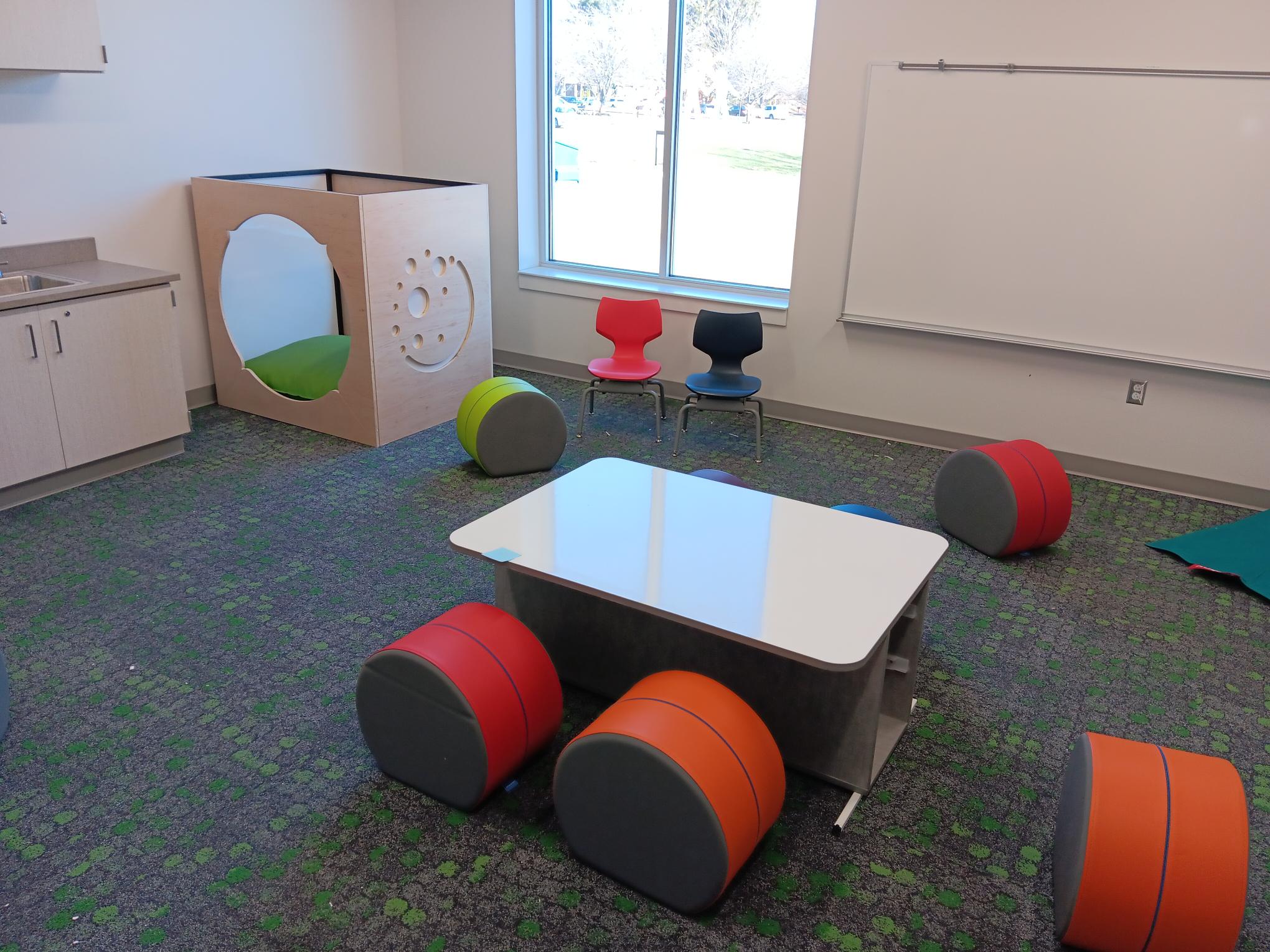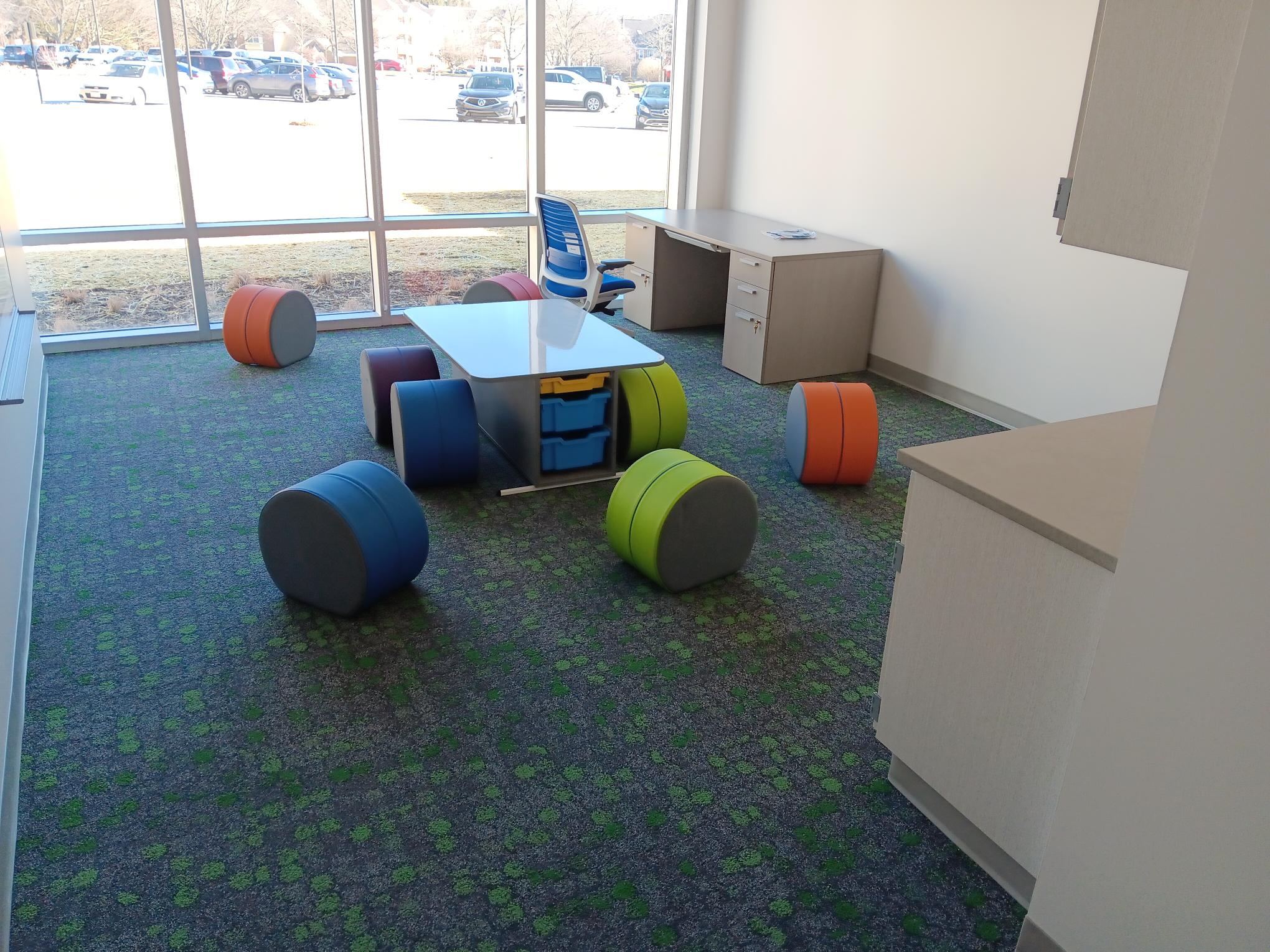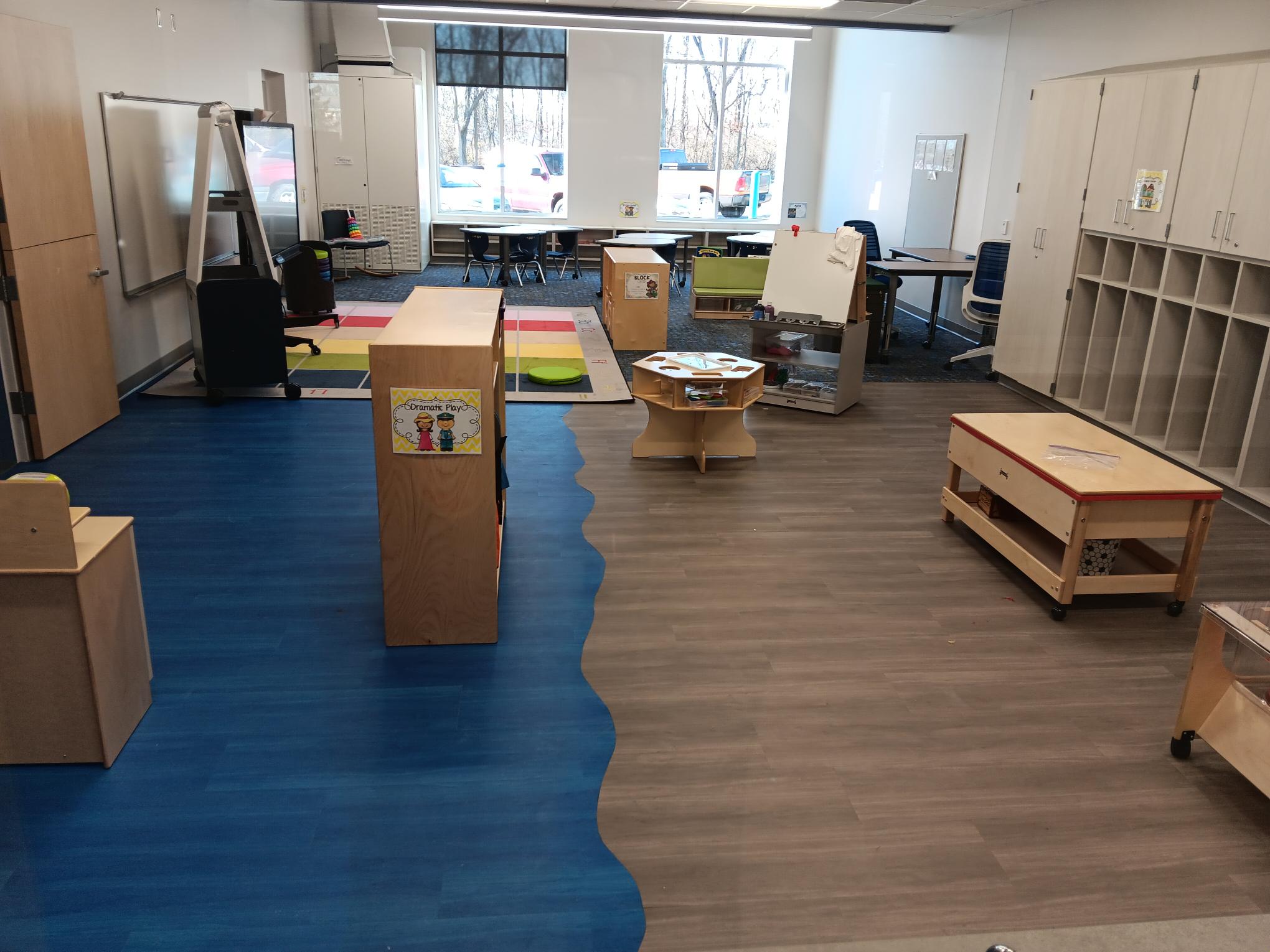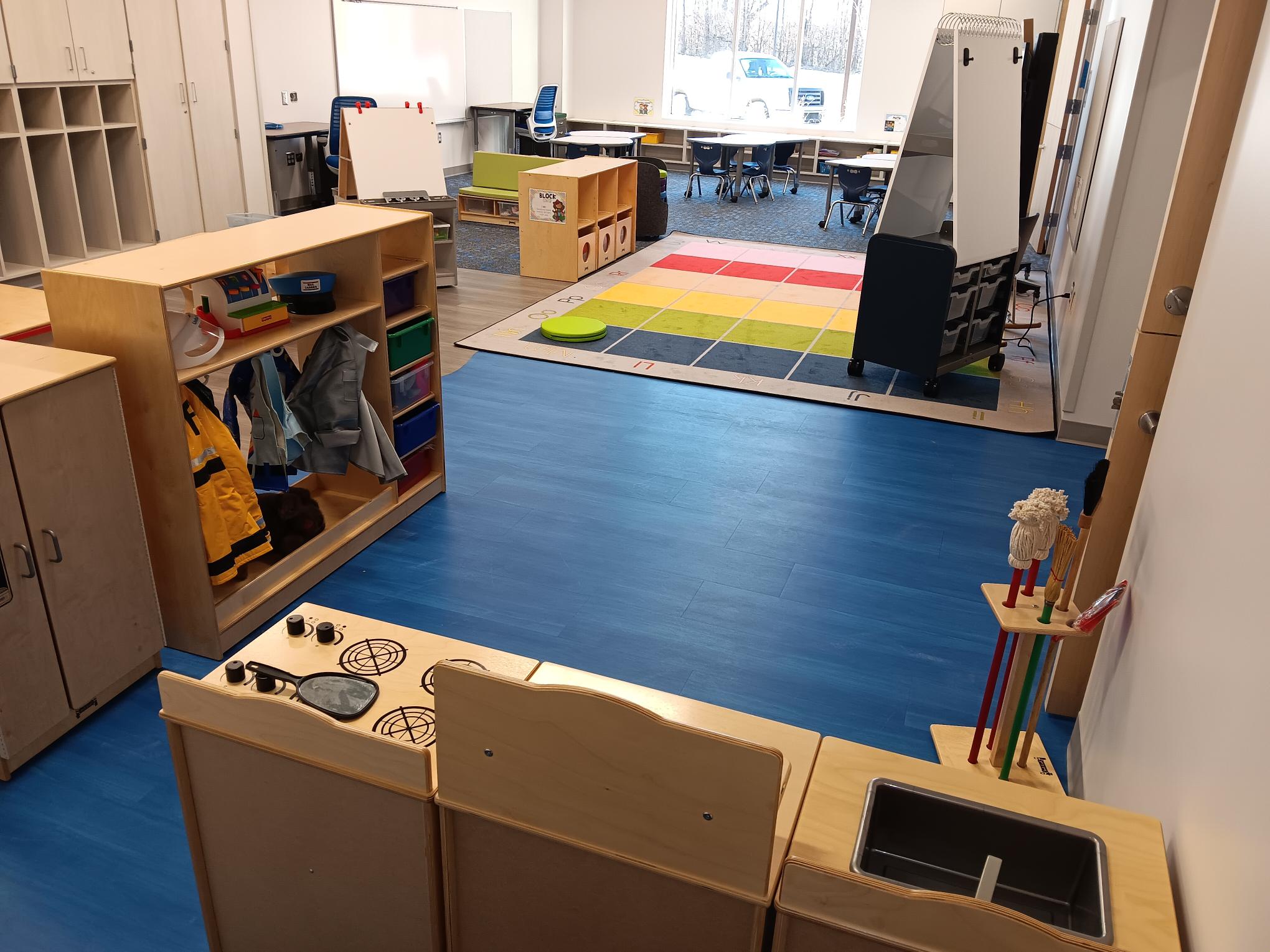How Learning Environments in K-12 Education Influences and Enhances Outcomes
-
Category
Studio-K12, Innovation -
Posted By
Kathryn Roche -
Posted On
Feb 12, 2024
By Kathryn Roche, Anna Marie Burrell, and Dainen Tolman
The role of spatial design in K-12 education is multifaceted and ever-changing, impacting everything from students’ feelings of safety and inclusivity to the effectiveness of teaching methodologies. This blog will explore these aspects, highlighting the importance of early engagement in design conversations, the role that furniture plays, and the concept of future-proofing spaces for active learning. Read on to learn more.
The Psychological Impact
For years, we’ve known that effective educational space design can create learning environments that positively impacts learning. We have also known that the environments we design can help foster trust, safety, and belonging which are critical components in helping students be successful. The design of educational spaces should consider many things including:
- Flexibility of space to encourage intentionality and support choice and control within the space.
- Immersive environments that promote skill development through creativity, collaboration, communication, and critical thinking.
- Quiet and calm environments that evoke a feeling of safety to develop trust.
- Social environments that give students choice and promotes collaboration.
- Environments that celebrate identity and create a sense of pride, community, and belonging.
- Safe and secure environments that encourage trust in students, parents, and community.
- Equitable spaces that allow for the same opportunities no matter where you might live.
- Diminishing barriers between peer-to-peer interaction for students as well as educators.
- Biophilic design that incorporates natural elements into the built environment and can also significantly reduce stress and anxiety.
- Healthy environments that promote environmental comfort, environmental stewardship, and healthy humans through different technology, lighting, acoustics, color, textures, and HVAC options.
In essence, the environments where learning occurs have profound effects on students’ wellbeing. Well-designed spaces can often lead to a positive learning Mindset, by both students and educators. This is particularly important in the developmental stages when students are forming their thoughts and opinions about school and the world around them.
Early Conversations that engage the End User, Design Team, and Furniture Design Partners
When working with K-12 Owners, we emphasize early engagement with students, teachers, administrators, community members, and other partners relating to furniture and space planning. Establishing these collaborations at the forefront of the design process helps us better understand what is most important to each group so that our work meets their specific needs.
As part of our process, Schmidt Associates feels it’s a win-win for all when collaboration begins early on between us, the design team, school leadership, and partners such as Dainen Tolman, the Director of K-12 Education at Business Furniture + Co. Dainen’s work has been instrumental in helping to future-proof educational spaces through sharing the educational science behind furniture at the newly launched Mindset Showroom. Mindset is a sister showroom of Business Furniture that was intentionally created to showcase Educational Furniture solutions that span far beyond the traditional student desk. Within Mindset, Dainen emphasizes the importance of furniture in space and how “Space drives Behavior and Behavior shapes Culture.”

The Washington Township ELC Sensory Room (top) features the NorvaNivel Incupod for a calming corner. Smith System Flavor Noodle chairs feature a seat to support various movement and posture.

Featured in both the Sensory Room and Cummins Room (below) is a NorvaNivel STEAMspace table to provide collaborative work and interactive play. NorvaNivel Rockerott stools provide a seating alternative to support different sensory needs.

Each general classroom was carefully designed to support every type of center from Sensory and Dramatic Play to Block and Art. All typical classrooms were provided the same furniture pieces that can easily be reconfigured.

Floor time and dramatic play, which are integrated into the school’s creative curriculum, are supported with a Jonticraft Kitchen, Dress-Up, and House Cleaning Rack. Flagship Carpets were color customized to support the sensory needs of different students. The Smith System Cascade Notebook is utilized for whiteboard space and storage.
The Connection of Furniture and Learning
Age-appropriate and flexible furniture plays a pivotal role in creating effective learning environments. Furniture tailored to students’ physical needs aids in achieving comfort and accessibility, which in turn enhances concentration and engagement. Intentionally designed furniture not only supports learning but also physical health and wellness. It’s also recognized that students learn differently, and learning patterns even shift throughout the day. In fact, according to Arch Daily, concentration levels vary for students by age, with ages six to ten averaging only about five minutes of concentration, whereas the number only increased by 10 minutes for 11-15-year-olds and rounded out at 25 minutes for students ages 16-20. Because of these statistics, flexibility of the design and furniture is also imperative.
Recently, Schmidt Associates and Business Furniture + Co completed the design of the newly opened Early Learning Center in Indianapolis for the Metropolitan School District of Washington Township (MSDWT), where the furniture plays a critical part in the student and teacher success. The building is the new home for MSDWT’s developmental preschool and daycare where the preschool classrooms are configured in neighborhood pods, flanked by resource support spaces, and calming or quiet areas. These neighborhoods provide space for collaborative play and learning outside of the classroom with a connection to both the classrooms and secure corridor leading to shared spaces. A connection to nature is an important feature in the design and is facilitated through raising the ceilings at the classroom perimeter for views of the adjacent treetops. The front entry has felt shaped tree forms that double as acoustical treatment, and a sensory play area for student and parent waiting.
On this project, the leadership of MSDWT was highly involved in the design of the building and furniture in collaboration with both Business Furniture and Schmidt Associates.
MSDWT should be very proud of their new Early Learning Center and the opportunity it affords their younger students. Through a long discovery process of identifying the best practices to engage with their students and the potential barriers the teachers encounter, we designed a space that equips them with the tools they need to meet and grow each and every student. We took every opportunity with furniture and space to find ways to support the staff and students’ physical, emotional, and cognitive well-being.
Indy Star: See progress on these major Washington Township school district construction projects.
While the school has not been open long, the design has laid the groundwork for encouraging creativity, academic growth, and opportunities to build positive self-concepts can be directly connected to a flexible design and age-appropriate furniture.
By considering the diverse needs and perspectives of our Owners, we are better able to work with Owners to create spaces that cater to all students, regardless of their backgrounds or abilities. This engagement also means that the design process is intentional and focused on creating spaces that truly support learning for all.
Future Proofing
By partnering early in the design process, educators and designers can collaborate to create versatile spaces that adapt to the changing requirements of students. We know that students and faculty, and their needs, will inevitably change over time but if a classroom is outfitted to provide fluidity and flexibility, it will allow the space to adapt with those changes. The success of flexible and adaptive learning environments also hinges greatly on the willingness of teachers to embrace change. Teachers who are open to reconfiguring spaces and experimenting with furniture arrangements can significantly enhance the learning experience. This adaptability allows for a student-centered approach, where the environment is continuously being molded to meet students’ evolving needs.
As discussed, the design of K-12 learning spaces goes far beyond aesthetics. Creating environments that are psychologically supportive, flexible, and inclusive are necessary to early childhood development. Engaging in early conversations about future proofing and adaptability can help educators meet the diverse and changing needs of students. When students feel safe and secure when their learning needs are met, the excitement of learning becomes contagious, paving the way for more effective and enjoyable educational opportunities.
Looking to start a K-12 space design project? Let’s talk.
Interior Designer| Associate Kathryn Roche, NCIDQ, IIDA, LEED GA, thrives on the challenge of conceptualizing solutions to help Owners solve problems to create positive experiences for the end user. She enjoys bringing a fresh approach to the design process and delivering a relevant yet enduring design that is unique for each client. She loves collaborating and working closely with other disciplines to create a learning environment that generates ideas. Kathryn enjoys building lasting relationships with Owners through acute listening and genuine enthusiasm for client satisfaction.
*K-12 Studio Leader and Principal at Schmidt Associates Anna Marie Burrell, AIA, RID, contributed to this blog.
*Director of K-12 Education at Business Furniture + Co. Dainen Tolman contributed to this blog.







